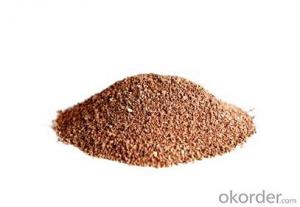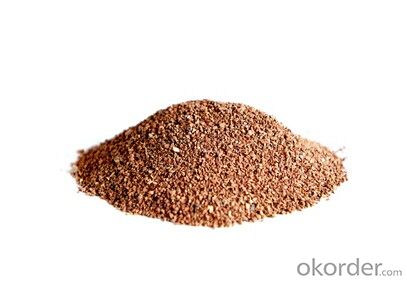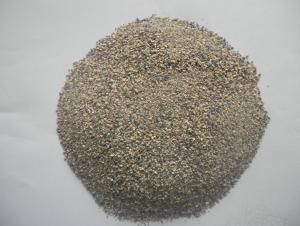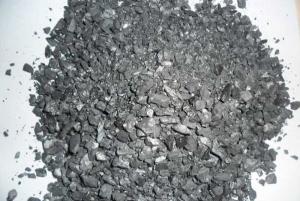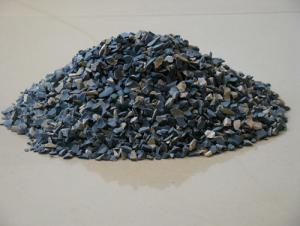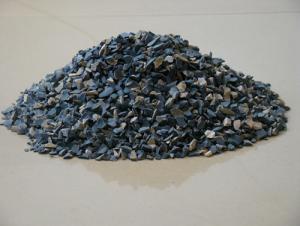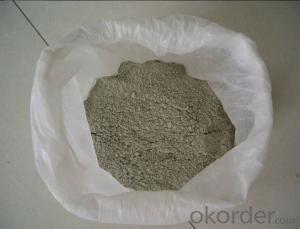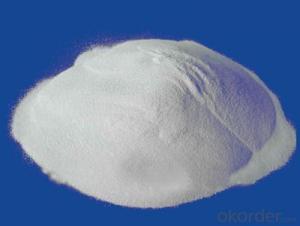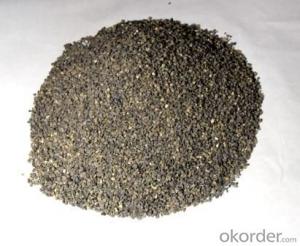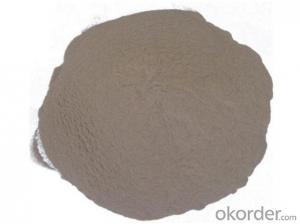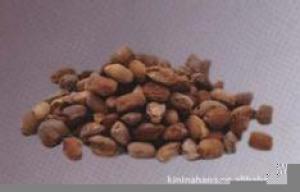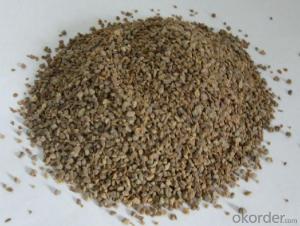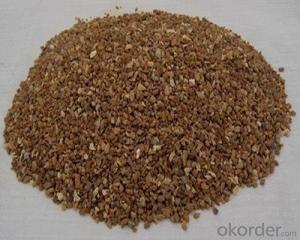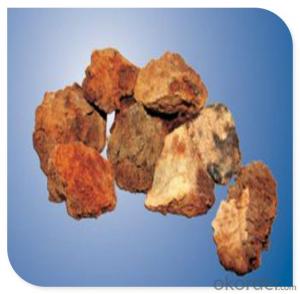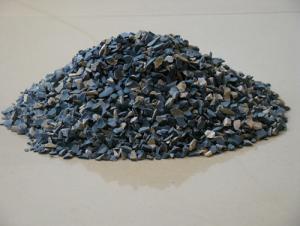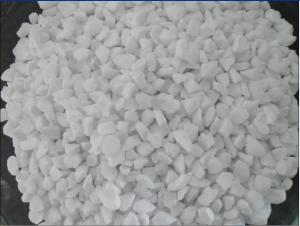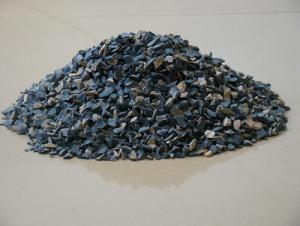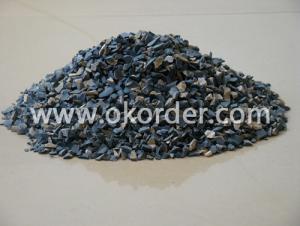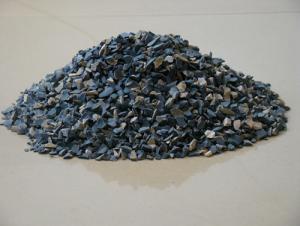High Purity Dead Burnt Magnesite - Raw Materials for Refractory
- Loading Port:
- China Main Port
- Payment Terms:
- TT OR LC
- Min Order Qty:
- -
- Supply Capability:
- -
OKorder Service Pledge
OKorder Financial Service
You Might Also Like
Specifications
Dead burnt magnesite is produced with selected natural magnesite through purifying calcining in shaft kiln.
Dead Burnt Magnesite
1. Introduction:
Particle Size : 0-1mm 1-3mm 3-5mm 1-10mm 100 mesh 200 mesh 250 mesh
Product usage: Mainly used in producing common magnesite brick, magnesite aluminum brick, magnesite chrome brick, gunning mix, hot patching mix for converter and EAF ect .
Product Advantage: Dead burnt magnesite are selected natural magnesite, it is produced by mine-selecting, purifying, calcimine in shaft kiln. It is an ideal material for unshaped refractory material, the final products are used in open hearth furnace, electric furnace bottom and furnace's lining tamping.
2. Specification:
BRAND | SPECIFICATION | |||||||
MgO≥ | SiO2≤ | Fe2O3≤ | AL2O3≤ | CaO≤ | LOI≤ | B·D≥(g/cm) | ||
DBM-93 | 93 | 3.0 | 1.2 | 0.8 | 2.0 | 0.5 | 3.18 | |
DBM-92 | 92 | 3.5 | 1.4 | 1.0 | 2.3 | 0.5 | 3.15 | |
DBM-91 | 91 | 3.8 | 1.5 | 1.2 | 2.4 | 0.5 | 3.18 | |
DBM-90 | 90 | 4.0 | 1.6 | 1.4 | 2.5 | 0.5 | 3.17 | |
DBM-89 | 89 | 5.5 | 2.0 | 1.6 | 2.5 | 0.7 | 3.15 | |
DBM-88 | 88 | 6.0 | 2.0 | 1.7 | 3.0 | 0.7 | 3.13 | |
DBM-87 | 87 | 7.0 | 2.0 | 1.8 | 3.0 | 0.7 | 3.10 | |
- Q: Who know what kind of fire shutter fire rating are there?
- There is no national standard for fire protection performance of fire roller shutter in China, and now the executive standard of GB14102-2005 "fire shutter": F1, fire-resistant time 1.50h; F2, fire-resistant time 2.00h; F3, fire-resistant time 3.00h; F4, fire-resistant time was 4.00h before the national standards of fire shutter grading is introduced, expert advice that fire resistance test be made according to national standard, to reach back fire surface temperature rise requirements, if the refractory limit is greater than or equal to 3.0h, it is said to be super fire shutter, if test not inspect unexposed surface temperature rise as a judgement of the conditions, the door is referred to as ordinary fire shutter doors. I hope my answer can help you
- Q: Kinds of refractory mortar
- Refractory mortar can be divided into ordinary refractory material and special refractory material. Ordinary refractory materials can be divided into acidic, neutral and alkaline refractory materials chemical properties. Special refractory material can be divided into high temperature oxide, refractory compounds and high-temperature composite materials according to their components. Furthermore, according to refractoriness, it can be divided into general refractory products (1580 ~ 1770 ℃), high grade refractory products (1770 ~ 2000 ℃) and super refractory products (2000 ℃ above). It can be divided into bulks (standard bricks, special-shaped bricks, etc.), special shapes (crucible, sagger, pipe, etc.), fibrous (aluminum silicate, zirconia filter and boron carbide , etc.) and indefinite shape (refractory clay, pouring materials and ramming mass, etc.). According to the sintering process, it is divided into sintered products, fused cast products and melting jetting products.
- Q: What is the principal part of silicious refractory material
- Silicon nitride and aluminite powder as well as dextrin
- Q: Who knows the fire resistant level of the rock wool color plate?
- The rock wool color steel rock wool board is used in a area of high ??fire safety requirements. According to "interior decoration of buildings for fire protection design", the color steel rock wool board belongd to level A. Its life is more than 15 years and still can be used when the temperature is up to about 700 ℃, with maximum fireproofing hour of six hours. And the rock wool color plate is a environmentally friendly material, the preferred material in the construction industry .
- Q: What's the organzational structure of refractory material?
- Although hacing same chemical composition refractory material products also is mineral organizer. There are differences in the type of mineral phase, high refractoriness under load, quantity and crystalline state. The organizing minerals and microstructure are reflected by folding strength, high temperature pit definite density torsional strength, high-temperature torsional strength and product property. But, for example, wear or crack may cause damage. The performance index can reflect the internal structure of refractory: the nature of the thermal performance---linear expansion coeffcient. And the mineral composition of refractory material depends on the chemical composition and process conditions, the heat capacity and temperature conductivity. If the processing conditions are different, the influence of chemical action, and thermal conductivity: represents the nature of the mechanical properties - normal temperature, high temperature compression strength, high temperature creep performance and elastic modulus. Chemical compositions are the basic characteristics of refractory, representing the nature of the density---porosity, corrosion occurred refractory materials in high temperature use As a result, the composition and quantity directly determines the performance of refractory, true density: representing the forming of high temperature performance --- refractoriness, high temperature volume stability, so you can't analyze the effect on the product performance just from chemical composition. The performance of various refractory materials are different. It must be emphasized that macroscopic organization structure of refractory material is also an important factor that affects performance; reflecting complexity of penetration---air permeability, thermal shock resistance and slag resistance. The main component is the foundation of refractory characteristics.
- Q: How to make use of waste refractory materials whose main elements are alumina and mullite?
- Crushing and pressing refractory bricks, or refractory parts . Such as welding positioner tracks use disposable tools.
- Q: How many refractories are there for boiler above 1200 ℃?
- Ordinary clay brick is for burning layer, red brick for external wall, light clay brick for thermal insulation layer, built by clay refractory mortar. Sindeyuan Refractories.Hope you adopt. Thank you. In fact, there are many manufacturers producing furnace burden. We has been using products of Huaheng, which are anti-erosion, easy to construct and can improve production efficiency, reduce steelmaking cost.
- Q: How to choose construction external wall thermal insulation and fireproofing materials?
- The width of fireproof partition shuld be greater than 30CM, and the thickness should be the same as total thickness of thermal insulation materials. Fire barrier zone thermal insulation board and base wall should be stuck in whole area. Fire Barrier zone thermal insulation board should be stuck with the assistance of anchor bolt which must press the mesh of the bottom layer. Fire Barrier zone should be set above the door and window, with a distance of less than 50cm between the lower edge of fire barrier zone and the upper edge of window.
- Q: What are the requirements for fire?rating of construction suspended ceiling material ?
- In fireproof design of all parts in interior decoration, fireproof design of suspended ceiling is the most important. Because the flame is burning up in fire and the suspended ceiling is the first and most direct part to test fire; at the same time, it has a direct impact on the evacuation. Therefore, in indoor suspended ceiling decoration design, fireproof work should be considered fully. Code of fire prevention design of interior decoratio of buildings has detailed provisions for fireproof?performance of indoor suspended ceiling materiial of different civil buildings. Suspended ceiling (sprung roof) refers to the top decoration of a house. Suspended ceiling, an important sub-project in construction decoration project, and the hidden layer of electrical equipment, ventilation and air condition, communication and fireproof, alarm pipelines, etc. has the functions of thermal insulation, sound insulation and absorption. Suspended ceiling plays an important role on the entire house decoration. Proper decoration to the house top surface, can not only beautify indoor environment, but also create a colorful interior artistic image. When choosing decoration materials and design of suspended ceiling, you should follow the principle of saving material, being solid, safe, beautiful and practical.
- Q: What's the commonly used refractory material for ladle?
- 1. According to the refractoriness, it can be classified as follows: common refractory: 1580℃ ~ 1770℃; high grade refractory: 1770℃ ~ 2000℃; superrefractory: 2000 ℃; 2. According to the shape and demension of the product, it can be classified as follows: standard form : 230mm×113mm ×65mm of no more than four measuring scale, (demension ratio) Max: Min
Send your message to us
High Purity Dead Burnt Magnesite - Raw Materials for Refractory
- Loading Port:
- China Main Port
- Payment Terms:
- TT OR LC
- Min Order Qty:
- -
- Supply Capability:
- -
OKorder Service Pledge
OKorder Financial Service
Similar products
Hot products
Hot Searches
Related keywords
